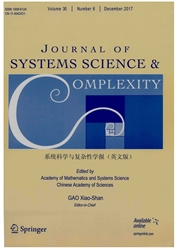

 中文摘要:
中文摘要:
分析了在奈特不确定性环境下,股票的预期回报率服从Markov链的跨期消费和资产选择问题.首先,对由风险资产预期回报构成的不可观测状态下的隐Marbv状态转换模型做出了刻画,使人们对感性的“不可观测状态”的实际金融市场到其精确的数学模型表达有一个清晰的认识.其次,在连续时间风险模型下,假设具有递归多先验效用的投资者拥有一个不可观测的投资机会的先验集,借助Malliavin导数和随机积分方程求解投资者最优消费和投资策略的显式表达式.通过数值模拟分析时,发现不完备信息下的连续Bayes修正产生了能够削减跨期对冲需求的含糊对冲需求,含糊厌恶增大了最优投资组合策略中对冲需求的重要性.讨论了当市场上出现红利因素,上述最优投资组合结论将会发生何种变化,并对红利因素进行具体的量化,定量地研究不同大小的红利对最优投资组合的影响.最后,利用Monte Carlo Malliavin导数模拟计算法分别说明了考虑含糊情形下最优股票需求和跨期对冲需求的变化趋势,且考虑在股票是否考虑支付红利的情况下对投资的影响.
 英文摘要:
英文摘要:
This article examines a continuous-time intertemporal consumption and portfolio choice problem with ambiguity, where expected returns of a risky asset with dividend payments follow a hidden Markov chain. We first portray the hidden Markov transition model under the unobservable state formed by the expected return of the risky assets, that enables people to have a clear understanding of the way from its perceptual and actual financial markets on unobservable state to its precise mathematical model. Second, we assume that investors with recursive multiple priors utility possess a set of priors for unobservable investment opportunities. The optimal consumption and portfolio policies are explicitly charaeterized in terms of the Malliavin derivatives and stochastic integral equations. Next, through a numerical simulation, we find that the continuous Bayesian revisions under incomplete information generate ambiguity-driven hedging demands that mitigate intertemporal hedging demands. Moreover, the ambiguity aversion magnifies the importance of hedging demands in the optimal portfolio policies. Again, the effect of dividends on investment and consumption market has also been deliberated. Finally, in order to better show the practicality of this article, the Monte Carlo Malliavin derivative simulation calculations are put into utilization to illustrate the trends of optimal stock demand and intertemporal hedging demand under ambiguous situations, and we consider the impact of dividends to investment as well.
 同期刊论文项目
同期刊论文项目
 同项目期刊论文
同项目期刊论文
 Existence and uniqueness for solutions to fuzzy stochastic differential equations driven by local ma
Existence and uniqueness for solutions to fuzzy stochastic differential equations driven by local ma On solutions to stochastic set differential equations of It^o type under the non-Lipschitzian condit
On solutions to stochastic set differential equations of It^o type under the non-Lipschitzian condit Empirical likelihood forheteroscedastic partially linear errors-in-variables model with -mixing erro
Empirical likelihood forheteroscedastic partially linear errors-in-variables model with -mixing erro Empirical likelihood forsemiparametric varying-coefficient heteroscedastic partially linearerrors-in
Empirical likelihood forsemiparametric varying-coefficient heteroscedastic partially linearerrors-in Optimal control of Markovian switching systems with applications to portfolio decisions under inflat
Optimal control of Markovian switching systems with applications to portfolio decisions under inflat Optimal consumption-leisure, portfolio and retirement selection based on alpha-maxmin expected CES u
Optimal consumption-leisure, portfolio and retirement selection based on alpha-maxmin expected CES u Optimal control of uncertain stochastic systems with Markovian switching and its applications to por
Optimal control of uncertain stochastic systems with Markovian switching and its applications to por Non-contact of solutions to stochastic differential equations driven by semimartingale with non-Lips
Non-contact of solutions to stochastic differential equations driven by semimartingale with non-Lips On small time large deviation principle for diffusion processes on Hilbert spaces under non-Lipschit
On small time large deviation principle for diffusion processes on Hilbert spaces under non-Lipschit Properties of Solutions to Stochastic Set Differential Equations under Non-Lipschitzian Coefficients
Properties of Solutions to Stochastic Set Differential Equations under Non-Lipschitzian Coefficients Optimal consumption-leisure, portfolio and retirement selection based on a-maxmin expected CES utili
Optimal consumption-leisure, portfolio and retirement selection based on a-maxmin expected CES utili DYNAMIC PORTFOLIO CHOICE UNDER THE TIME-VARYING, JUMPS, AND KNIGHT UNCERTAINTY OF ASSET RETURN PROCE
DYNAMIC PORTFOLIO CHOICE UNDER THE TIME-VARYING, JUMPS, AND KNIGHT UNCERTAINTY OF ASSET RETURN PROCE Empirical likelihood forsemivarying coefficient model with measurement error in the nonparametric pa
Empirical likelihood forsemivarying coefficient model with measurement error in the nonparametric pa 期刊信息
期刊信息
